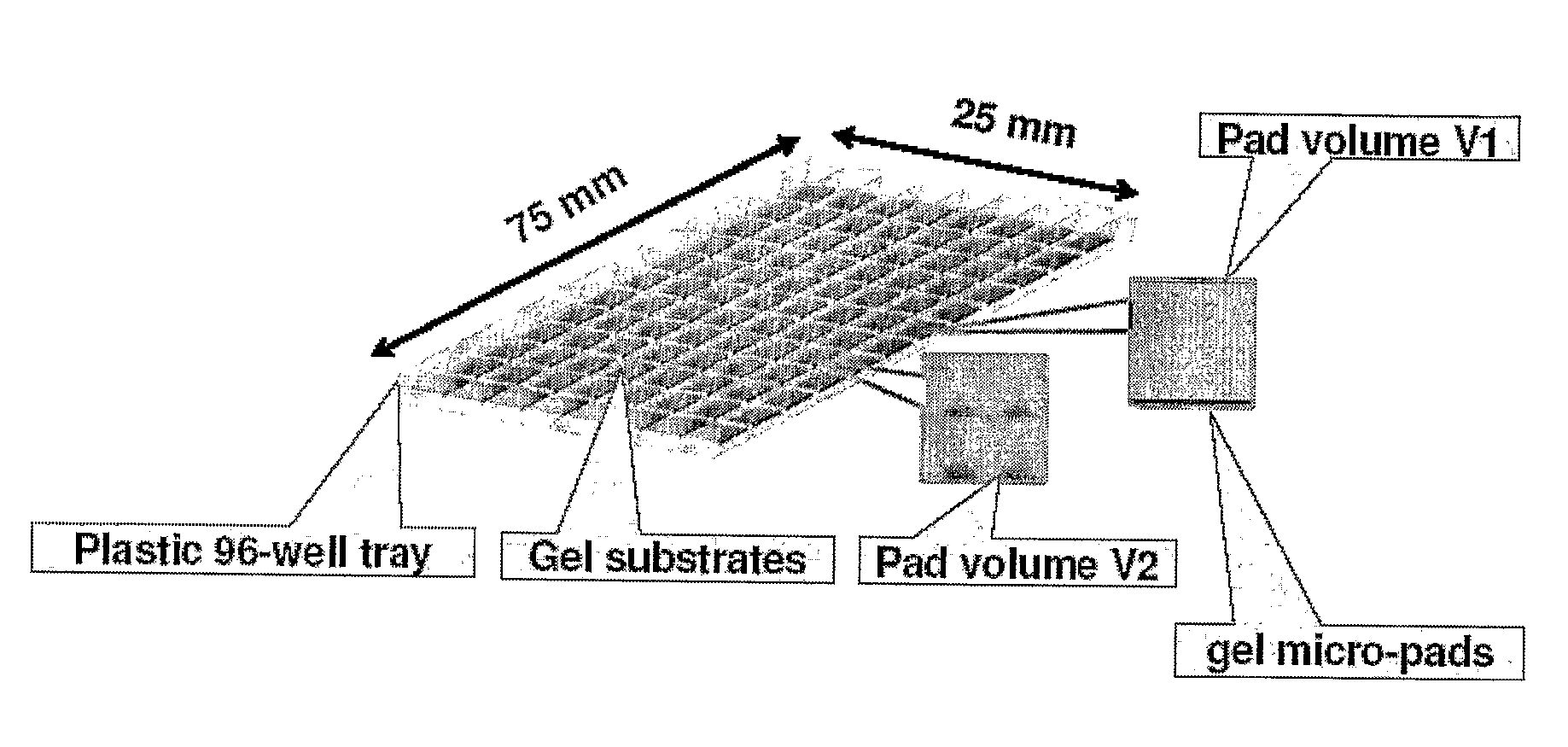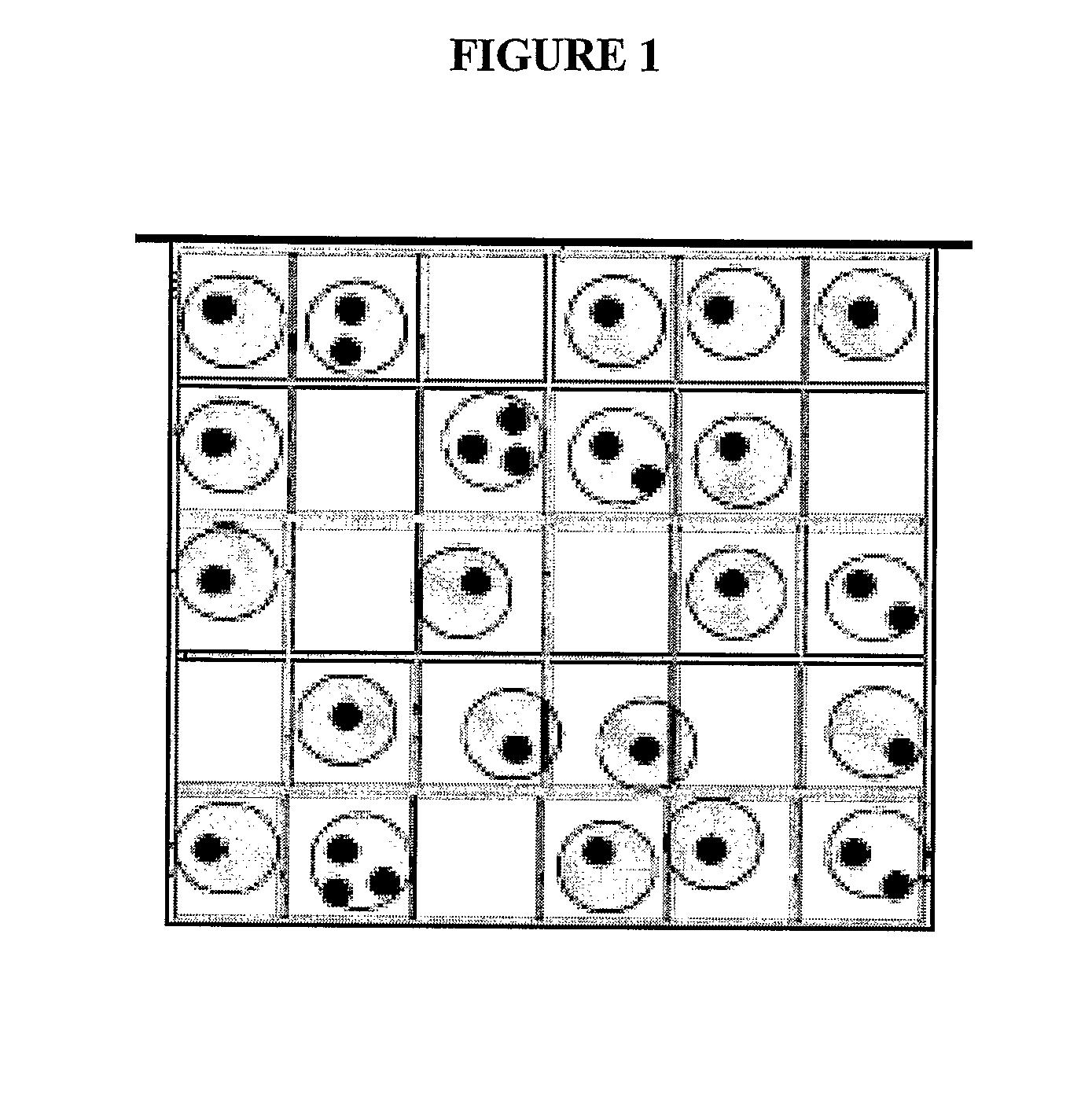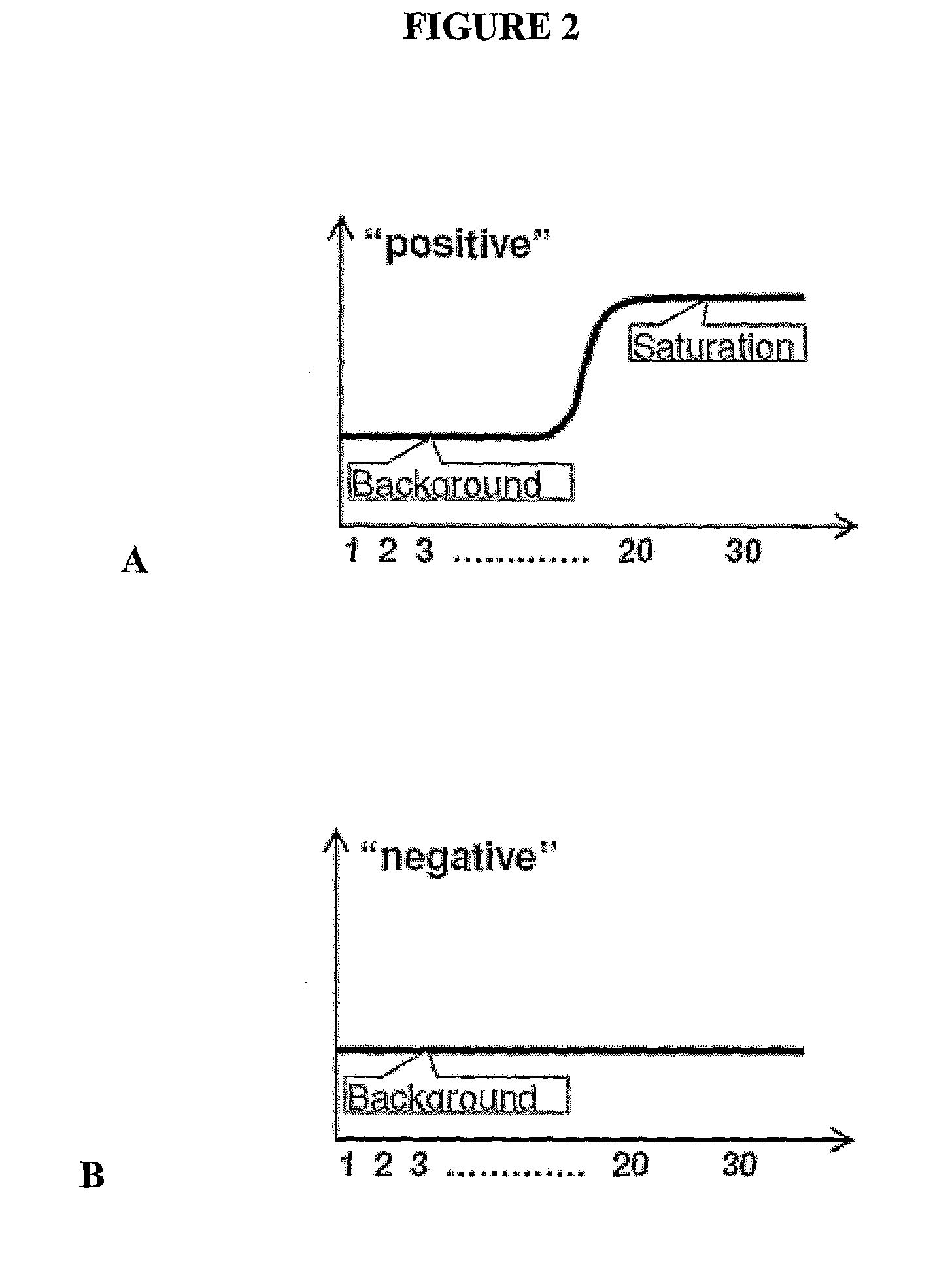Absolute PCR Quantification
a pcr and quantification technology, applied in the field of absolute pcr quantification, can solve the problems of low abundance targets, unreliable clinical diagnostics, and all known real-time pcr methods (and instruments) have not yet achieved the sensitivity, fidelity, reproducibility and resolution necessary levels,
- Summary
- Abstract
- Description
- Claims
- Application Information
AI Technical Summary
Benefits of technology
Problems solved by technology
Method used
Image
Examples
example 1
Multi-Capillary Arrays (MCAs) or Chips as PCR Vessels
[0153]The detection and absolute quantification of DNA samples will be performed during a real-time PCR amplification of the samples loaded into nano- or picoliter volume capillaries of disposable multi-capillary arrays (FIG. 7), or chips. Capillary electrophoresis will be used in the system that will help to increase the system sensitivity and specificity and to avoid false negative and false positive results.
[0154]The general view and the enlarged fragment of the MCA are shown in FIG. 7. The array can be divided into many PCR zones. The array in FIG. 7 shows 24 zones (approximately 3 mm long and 10 mm wide), although it is contemplated that MCA may comprise a single zone, or may comprise fewer or more than 24 zones. Each zone is a row of parallel nanoliter to picoliter capillaries, known as a sub-array. By way of example but not by way of limitation, a sub-arrays as described here contains 32 capillaries of 10 nl volume each (10...
example 2
PCR on Matrix Coated Substrates
[0156]PCR can be performed in a disposable sample tray with arrays of gel micro-pads as depicted in FIG. 8. For example, serial dilutions of DNA samples in a PCR mix are made, aliquoted to a multi-well plate and covered with mineral oil in order to avoid the sample evaporation. The samples are then loaded from the plate into individual cells of the disposable sample tray with the gel pad arrays. The DNA samples are allowed to infuse into the gel pads. For example, the samples are allowed in infuse into the gel pads at 60° C. for 5-30 minutes. After infusion of the sample DNA into the gel pad, the pad is washed to remove any remaining sample. Mineral oil or another sealing compound is applied to the top of the gel pad to seal the PCR template and generated PCR products in the gel pad (Tillib et al., 2001, Anal. Biochem. 292:155). If a polymer is used to seal the gel pad, the polymer may be allowed to solidify before proceeding with PCR. PCR is carried o...
example 3
PCR in Water / Oil Emulsions
[0158]Serial dilutions of a DNA sample in PCR mix are prepared and placed into a vial and covered with oil. Emulsification of the PCR mix and oil is preformed such that an emulsion is created and the bubbles are capable of withstanding PCR thermal cycling. The emulsified samples are loaded into a capillary tube and end point PCR is carried out in the tube. PCR generated products are detected in the bubbles, P percent of bubbles with no PCR amplification products associated with them is determined and ONTM is calculated as described herein.
PUM
| Property | Measurement | Unit |
|---|---|---|
| Capillary wave | aaaaa | aaaaa |
| Volume | aaaaa | aaaaa |
| Ratio | aaaaa | aaaaa |
Abstract
Description
Claims
Application Information
 Login to View More
Login to View More - R&D
- Intellectual Property
- Life Sciences
- Materials
- Tech Scout
- Unparalleled Data Quality
- Higher Quality Content
- 60% Fewer Hallucinations
Browse by: Latest US Patents, China's latest patents, Technical Efficacy Thesaurus, Application Domain, Technology Topic, Popular Technical Reports.
© 2025 PatSnap. All rights reserved.Legal|Privacy policy|Modern Slavery Act Transparency Statement|Sitemap|About US| Contact US: help@patsnap.com



